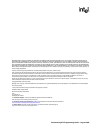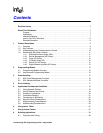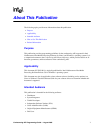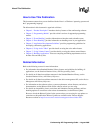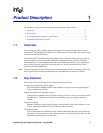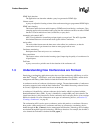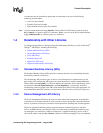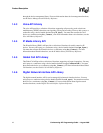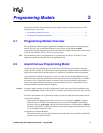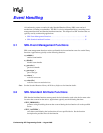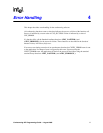
10 Conferencing API Programming Guide — August 2006
Product Description
DTMF digit detection
The application can determine whether a party has generated a DTMF digit.
Vol ume con tro l
A party can adjust the listening volume of the conference using pre-programmed DTMF digits.
DTMF tone clamping
This feature mutes dual tone multi-frequency (DTMF) tones heard during a conference. Tone
clamping applies to the transmitted audio going into the conference and does not affect DTMF
function. It can be enabled on a board, conference, or party basis.
Automatic gain control (AGC)
AGC is an algorithm for normalizing an input signal to a target level. The AGC algorithm
discriminates between voiced and unvoiced signals within a conference.
Active talker
The active talker feature sums the three most active talkers in a conference, so that the
conversation doesn’t get drowned out when too many people talk at once.
Conference monitoring
Participants have listen-only access to a conference.
Echo cancellation
This feature reduces echo from the incoming signal, improving the quality of a conference for
all participants.
Tariff tone
A party can receive a periodic tone for the duration of the conference call.
1.3 Understanding How Conferences are Formed
Developing a conferencing application requires the use of the conferencing API library as well as
other Intel
®
Dialogic
®
API libraries, such as the Standard Runtime Library (SRL) and the device
management API library. Other libraries include the IP media and voice libraries.
A conference consists of conferees (also known as parties). The maximum number of conferences
and parties supported varies with the Intel NetStructure
®
Host Media Processing software license
in use and, if applicable, the media load in use on the board.
A conference is identified by a unique conference device handle, which is registered with the
Standard Runtime Library (SRL). A party is identified by a unique SRL party device handle. The
virtual board device is the parent device for the conference device and party device; it has a unique
SRL device handle. For more information on the types of conferencing devices, see Section 5.3,
“Creating a Conference”, on page 20.
The conferencing API is used to open a conference, and to add parties to a conference. However,
these parties cannot participate in a conference until they are connected to a technology device
handle through the dev_Connect( ) device management API function. Technology device handles
are obtained through the respective technology API library functions. For example, the dxxxB1C1
voice channel device handle is obtained from dx_open( ).



